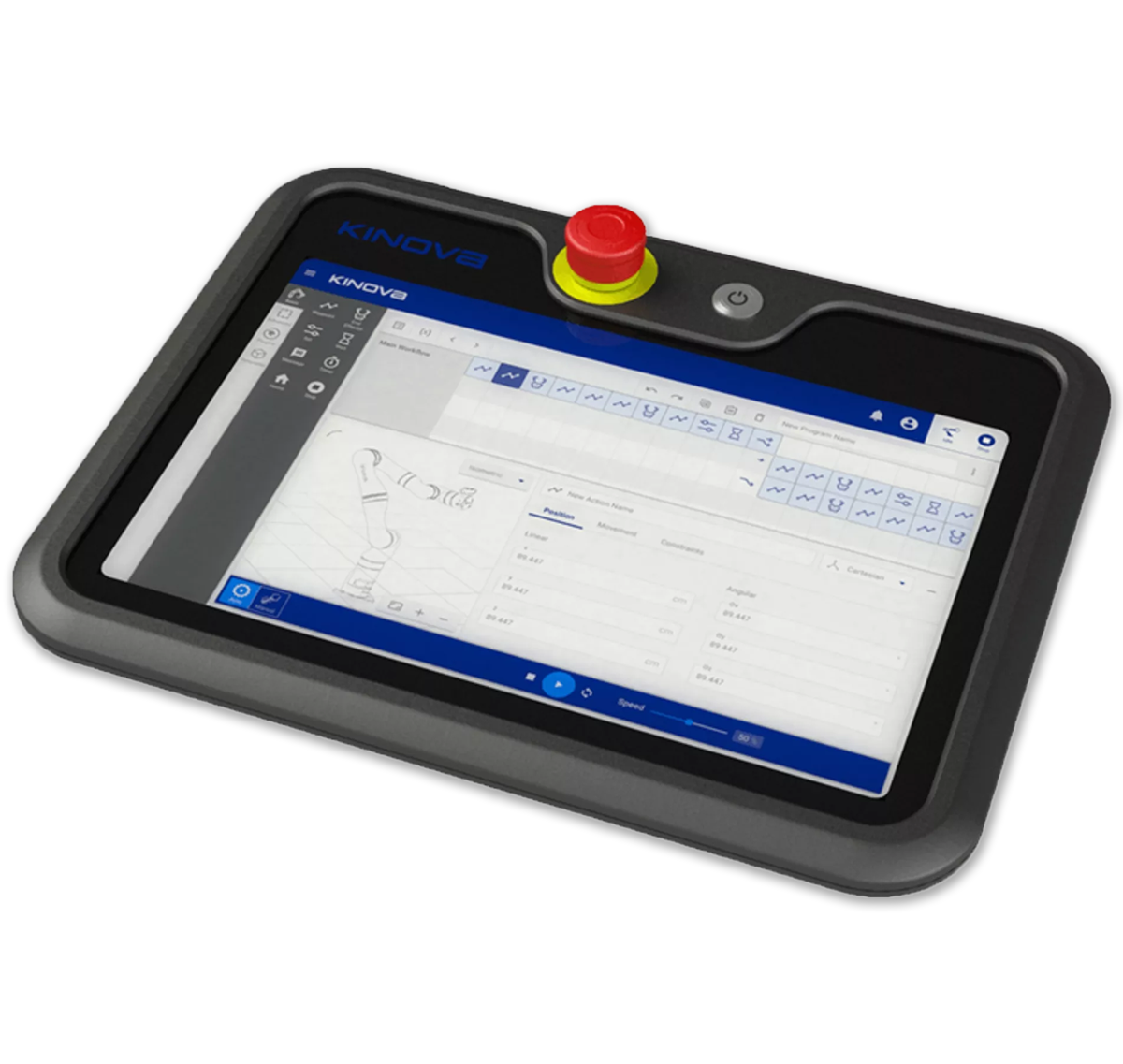KINOVA
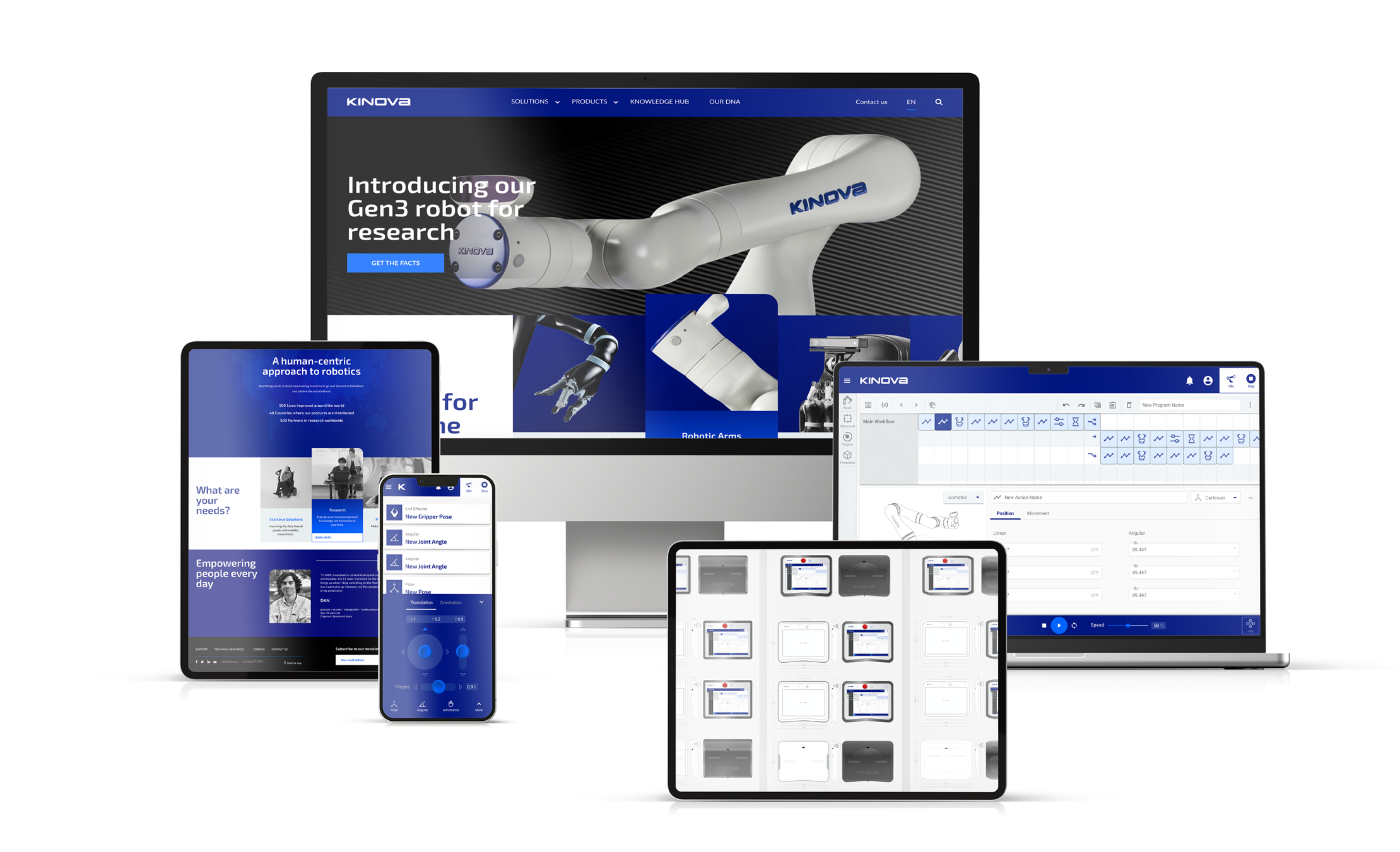
Innovating Automation: The Kinova Link 6 Experience
Kinova’s Link 6 cobot is reshaping the landscape of industrial automation, featuring sophisticated user interfaces and adaptable programming that enhance productivity for enterprises in diverse fields.
PROJECT OVERVIEW
Kinova, founded in 2006, by Charles Deguire and Louis-Joseph L’Écuyer, revolutionizes robotics with human-centric technologies for diverse applications, including professional tasks, medical assistance, and research.
The Link 6 project at Kinova was developed to introduce a next-generation cobot that combines exceptional user-friendliness with powerful automation capabilities. Designed to be intuitive and adaptable, the Kinova product aims to help businesses overcome skilled labor shortages, enhance safety, and meet the growing demands of Industry 4.0.
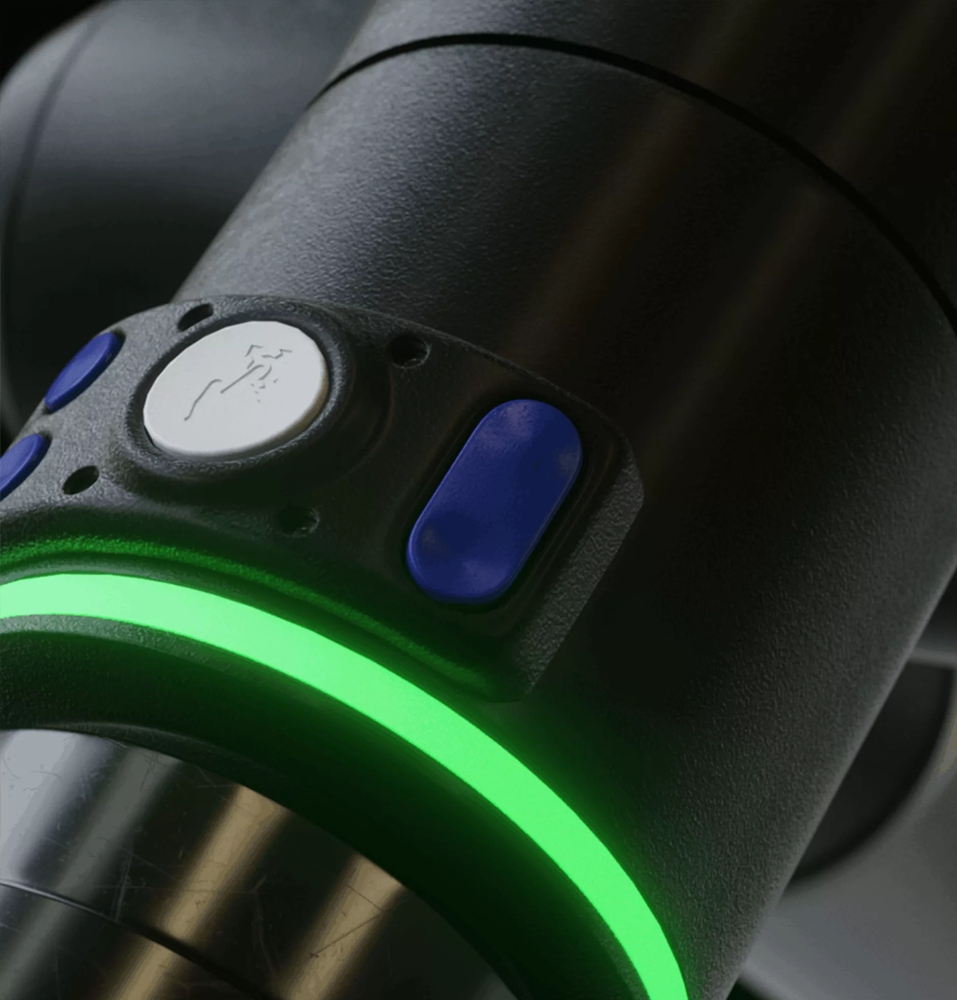
ECOSYSTEM & MARKET
MY ROLE
As the Lead UX Designer and Strategist at Kinova, I was instrumental in the development of Link 6’s user interaction components. My key contributions included:
- User Research: Conducted extensive field visits to understand the specific needs of manufacturers, which informed the design specifications of the robotic interfaces.
- Website and Web App Design: Led the design of Kinova’s website and the web app for controlling the robotic arms, focusing on enhancing user experience and ensuring seamless operation.
- Physical Interface Design: Designed the physical wrist interface on the Link 6 robot, optimizing it for ease of use and functionality.
- Teach Pendant Design: Led efforts for the design of the teach pendant accessory, a critical tool for robot programming and operation.
- Collaboration: Worked closely with an industrial design consulting firm and internal engineering teams to ensure that the Link 6 robot’s design was both aesthetically pleasing and functionally superior.
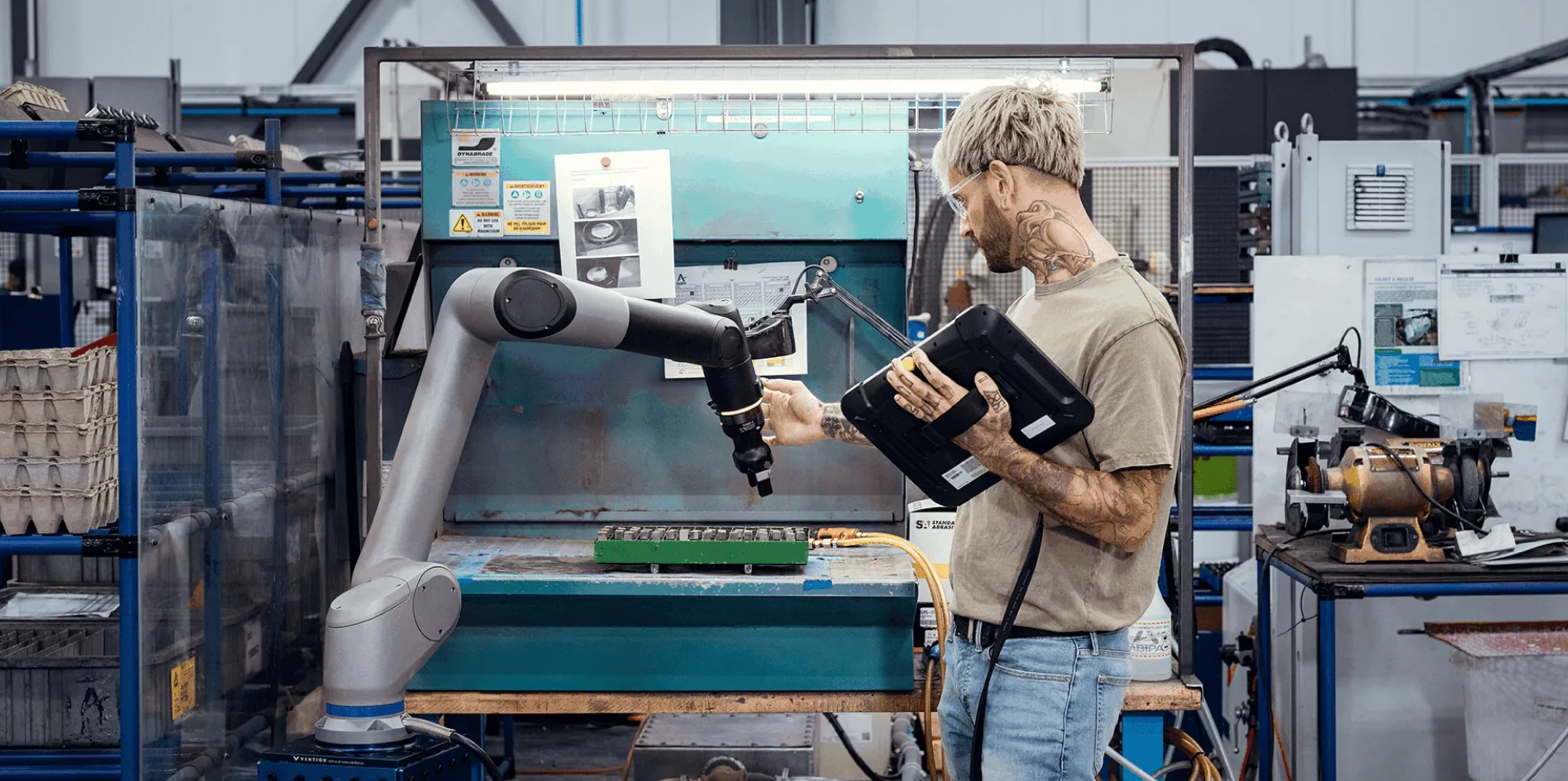
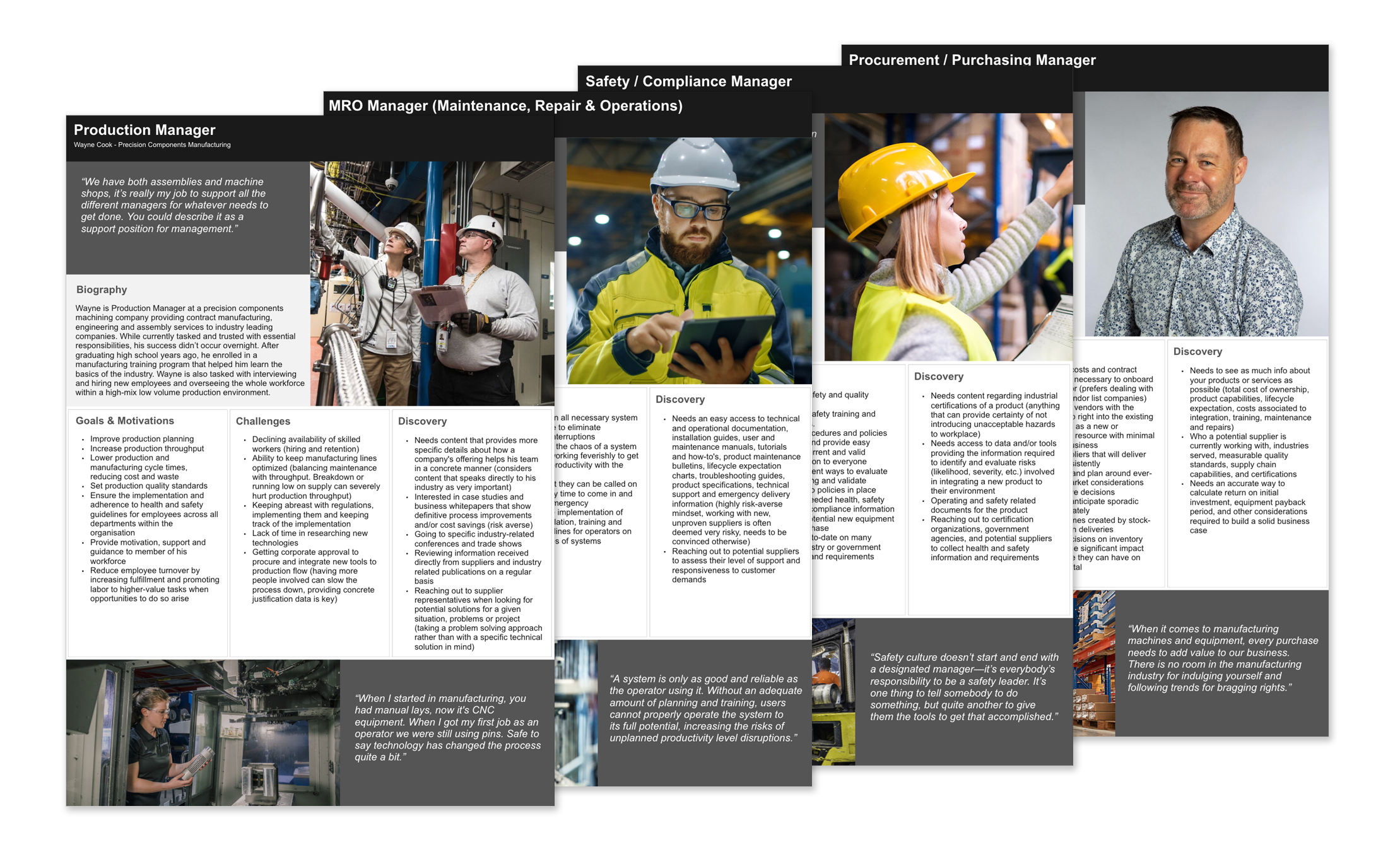
THE APPROACH
- Integrative Design Process: Leveraged a multidisciplinary approach by collaborating extensively with engineering and industrial design teams to align the cobot’s physical and digital interfaces with end-user requirements.
- User-Friendly Design Focus: Prioritized the development of intuitive features, ensuring ease of use and seamless integration into daily operations. The design process was driven by user feedback to create an accessible and straightforward product that meets the real-world needs of operators.
- User-Centric Programming Interface: Developed a user-friendly programming interface that supports visual programming, making it accessible to users without prior programming experience.
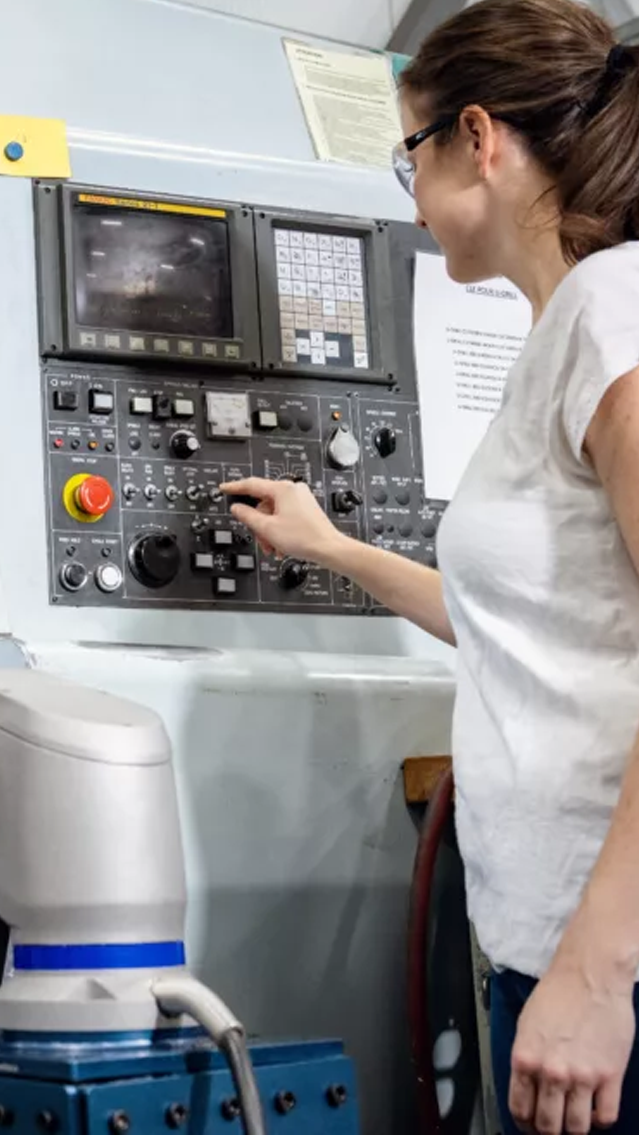
RESULTS
- Enhanced User Engagement: The intuitive design of the Link 6’s interfaces led to a reduction in deployment time and costs, making it an attractive option for a wide range of industrial applications.
- Operational Efficiency: The cobot’s features, such as superior hand-guiding capabilities and lightweight yet durable construction, have been highly effective in improving operational efficiency across various manufacturing settings.
- Market Reception: Link 6 has been well-received in the market, praised for its ease of use and versatility, and has notably contributed to Kinova’s position as a leader in the cobot market.
